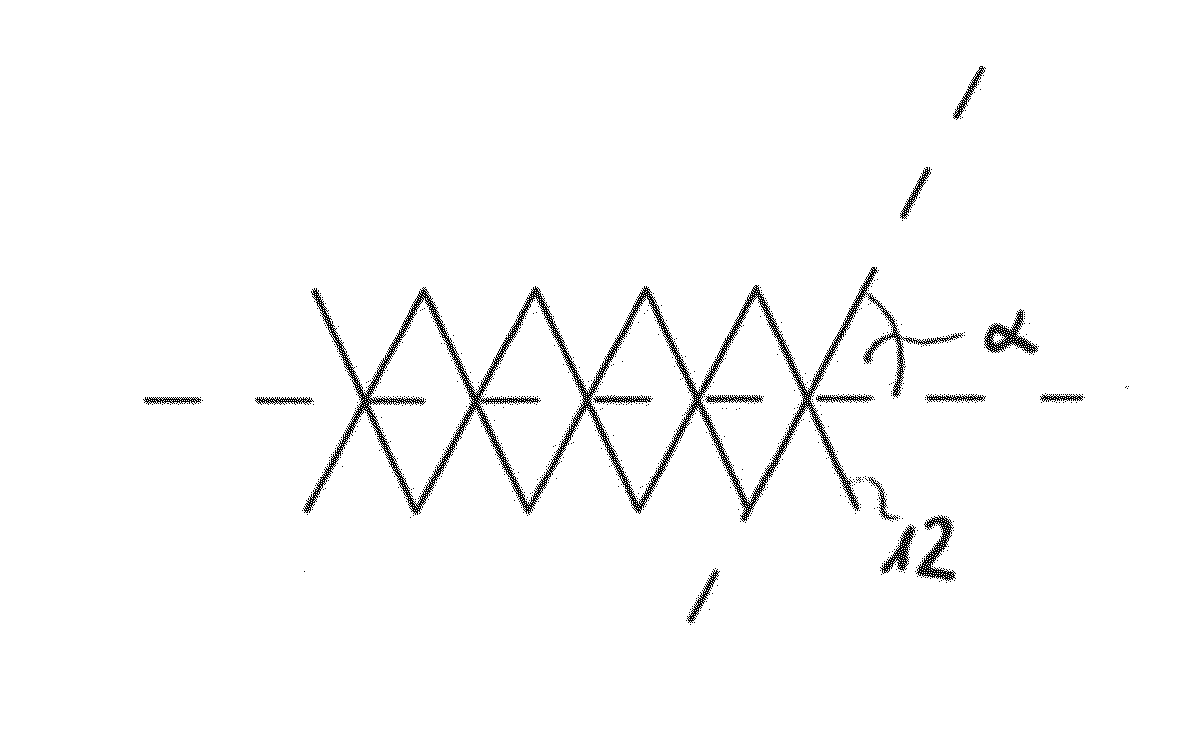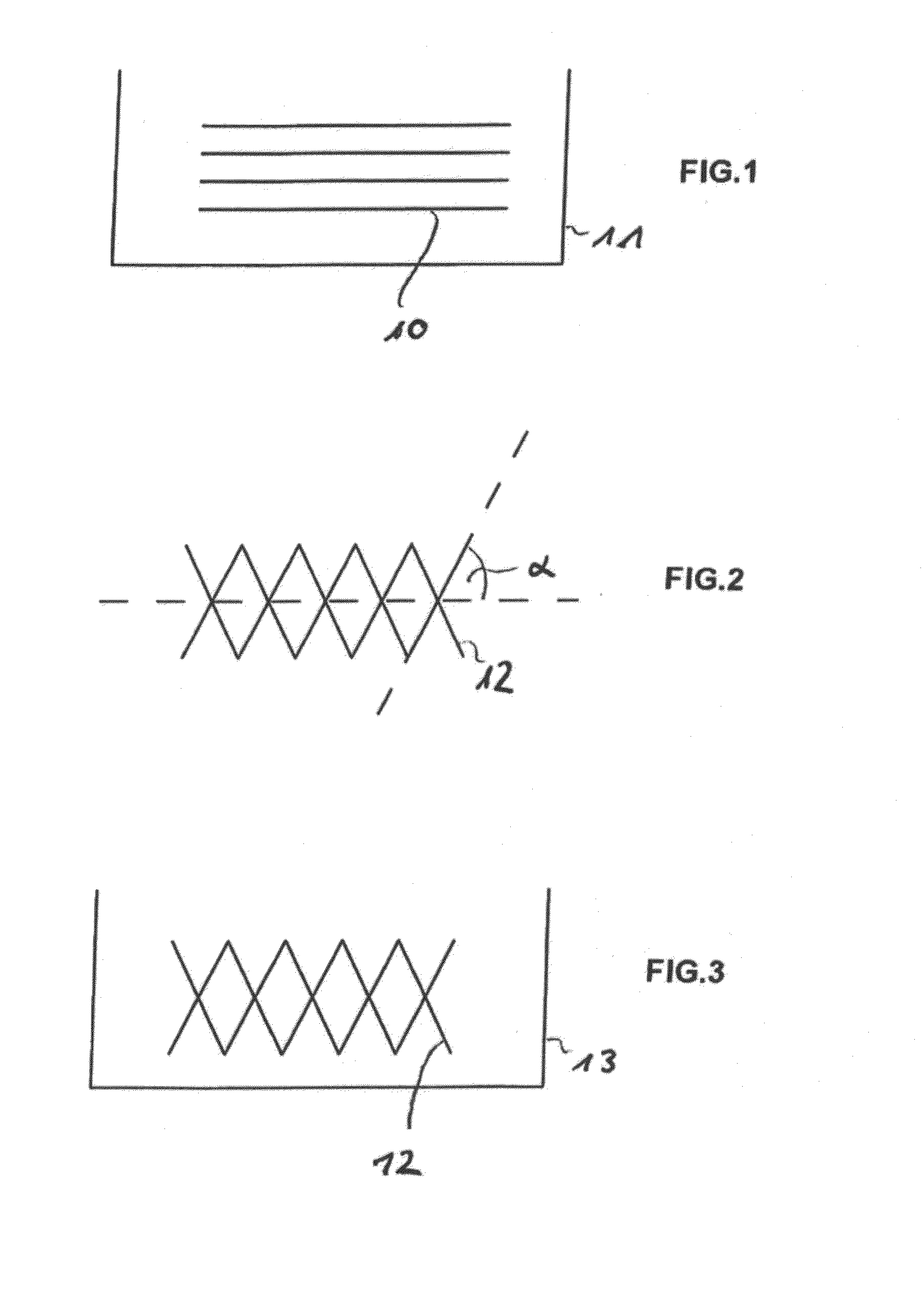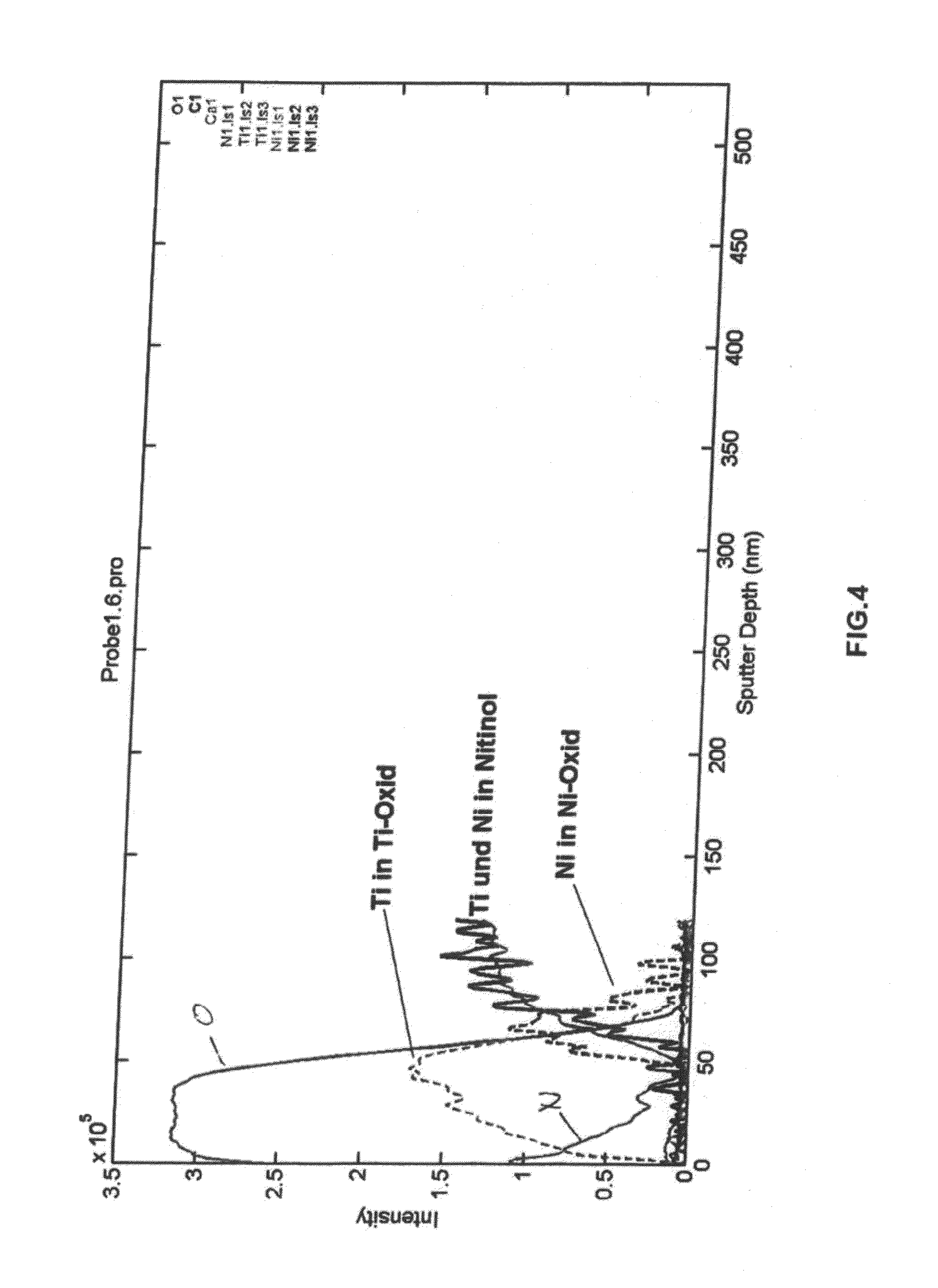Intravascular Functional Element and Method of Manufacture and Use of a Salt Bath for Warming Treatment
- Summary
- Abstract
- Description
- Claims
- Application Information
AI Technical Summary
Benefits of technology
Problems solved by technology
Method used
Image
Examples
example
[0068]The invention will be explained by means of an example of a functional element produced from a binary NiTi alloy, such as Nitinol. Other NiTi-containing alloys are possible. In this case the modification of the surface is represented by the thermal treatment in the salt bath, which treatment is responsible for adjusting the nitrogen concentration in the TiO2 mixed oxide layer. The basic component of the functional element, namely the wire, is electropolished in the first step. The electropolishing may be carried out as is usual in the prior art, for example at a temperature T<20° C., using a methanolic sulfuric acid solution. A homogeneous natural oxide layer with a layer thickness of approximately 5 nm is spontaneously formed on the electropolished wire upon contact with the ambient air.
[0069]In the second step, a functional element, a stent, is braided using the electropolished wire.
[0070]In the third step, the functional element is heat-treated in the salt bath in order to ...
PUM
| Property | Measurement | Unit |
|---|---|---|
| Fraction | aaaaa | aaaaa |
| Thickness | aaaaa | aaaaa |
| Thickness | aaaaa | aaaaa |
Abstract
Description
Claims
Application Information
 Login to View More
Login to View More - R&D
- Intellectual Property
- Life Sciences
- Materials
- Tech Scout
- Unparalleled Data Quality
- Higher Quality Content
- 60% Fewer Hallucinations
Browse by: Latest US Patents, China's latest patents, Technical Efficacy Thesaurus, Application Domain, Technology Topic, Popular Technical Reports.
© 2025 PatSnap. All rights reserved.Legal|Privacy policy|Modern Slavery Act Transparency Statement|Sitemap|About US| Contact US: help@patsnap.com



